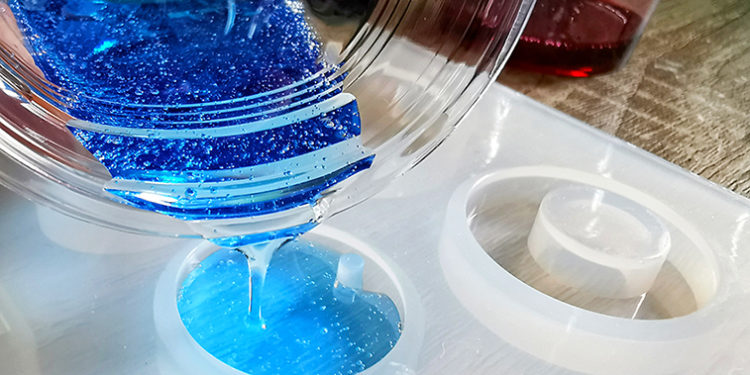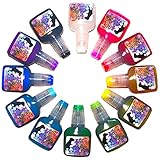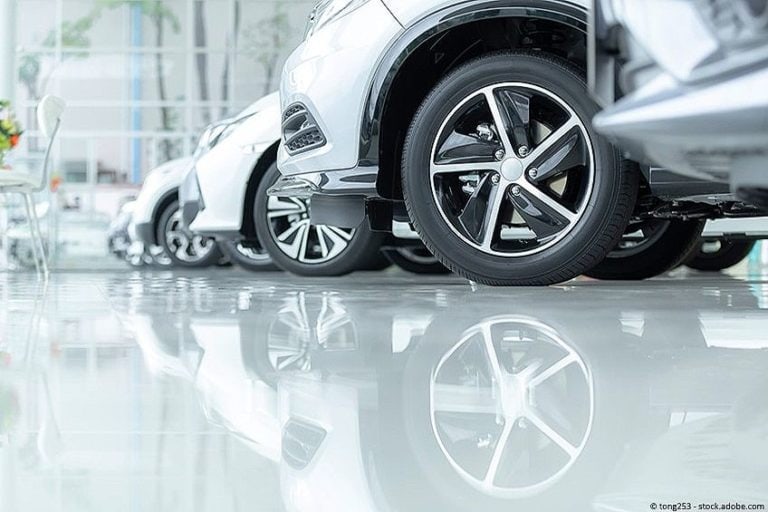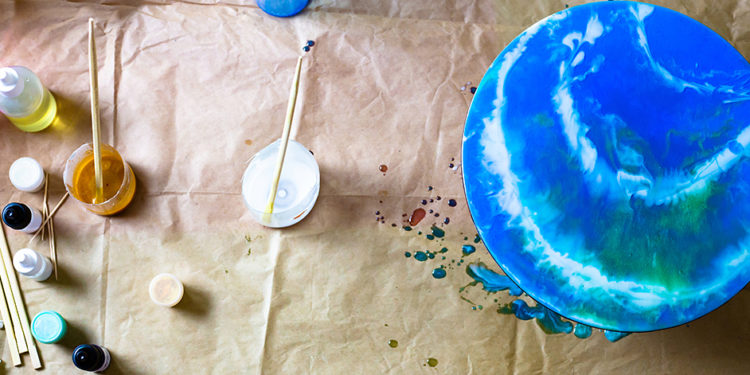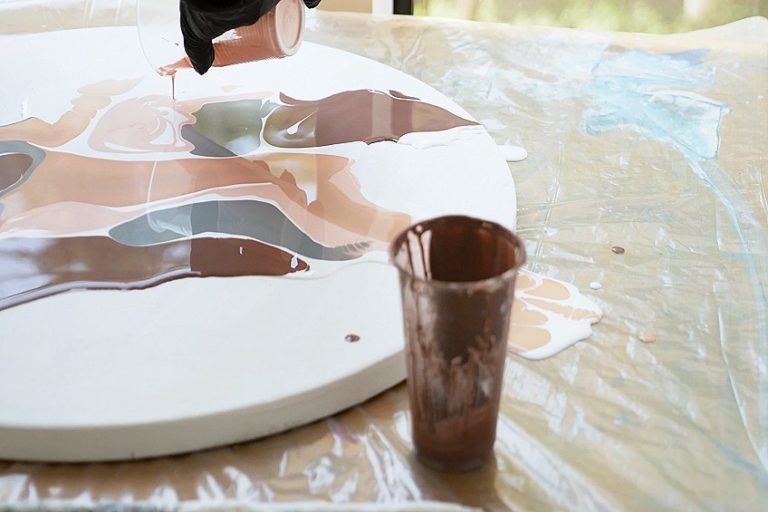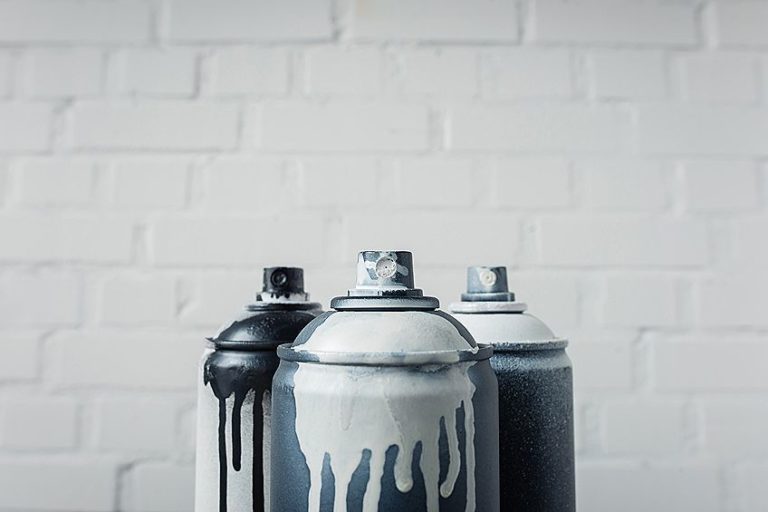Casting Resin Guide – Best Products and How to do Resin Casting
This post may contain affiliate links. We may earn a small commission from purchases made through them, at no additional cost to you.
The casting resins used for hobby and art are very special epoxy resin products, whose properties have been specially adapted to the unique requirements of casting decorative elements, figures, molds, and other areas of application. With the following information, we would like to show you clearly in which areas epoxy casting resins can be used, and which important points you should consider when buying.
Table of Contents
- 1 Buying Guide for the Purchase of Casting Resin
- 2 Buy the Right Clear Casting Resin for Every Project
- 3 Coloring Casting Resins in Different Colors
- 4 Limitations on the Layer Thickness
- 5 Curing Times: Patience with Casting Resin
- 6 Which Projects can be Executed with Casting Resin?
- 7 How to Use Clear Casting Resin
- 8 How to Make Transparent Casting Resin Crystal Clear
- 9 Coloring Transparent Casting Resin
- 10 The Hardness of the Cast Surfaces
- 11 What to do in Case of Air Bubbles in the Epoxy Resin?
- 12 How can Epoxy Resin be Precisely Weighed and Easily Mixed?
- 13 The Best Resin Casting Molds
- 14 Safety also Comes First when Working with Resin
Buying Guide for the Purchase of Casting Resin
Casting resin is a relatively low-viscosity synthetic resin that is always mixed fresh from two components before processing: the actual resin in liquid form and a matching hardener. Once these two ingredients are mixed together, a chemical reaction is set in motion. This not only releases heat, but also allows the mass to harden completely after a certain time.
The most desirable feature of casting resin is precisely its thin consistency. This makes it possible for the casting resin to penetrate even the smallest gaps and cavities and fill them. However, casting resin with a particularly low viscosity also takes a longer time to harden. If you want to buy such a casting resin, you probably already have a concrete project in mind.
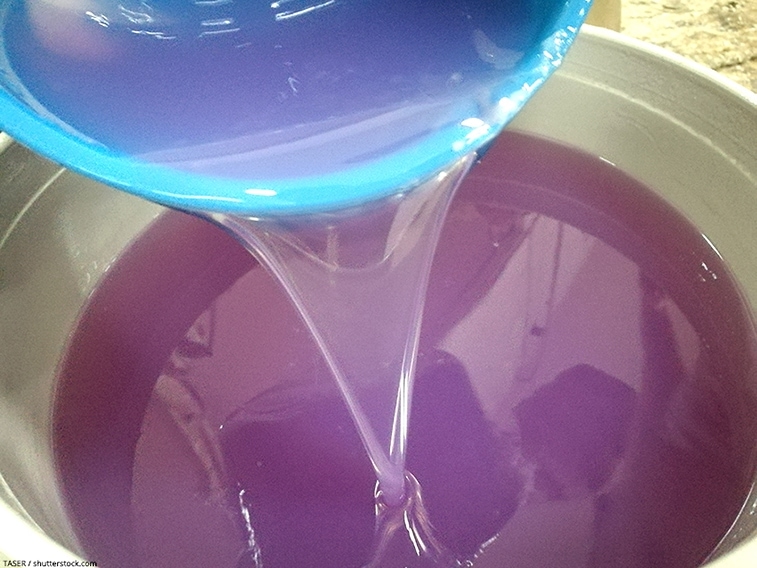
Buy the Right Clear Casting Resin for Every Project
Resins are available in a wide variety of products from special dealers and on the Internet. However, these are often named with very different product names. This makes it quite difficult to distinguish between special clear casting resins and other epoxy resins. After all, these products are sometimes also referred to as laminating resins, topcoats, or gelcoats in relation to possible areas of application. If, due to misunderstandings or misleading designations, an unsuitable resin is then purchased, this may well prove costly. At this point we would like to support you with our experience and have listed the best casting resin for you:
Best Value for money Casting Resin: INCREDIBLE SOLUTIONS Deep Pour
- Thick pours, low viscosity, and long working time
- Clear results and compatible with pigments and dyes
- 2:1 mixing ratio by volume
Differences Between Casting Resin and Epoxy Resin (Laminating Resin)
These are the main differences between casting resins and epoxy resins:
Casting Resin
- Relatively low viscosity
- Longer working time and also longer curing time
- Casting of thicker layers in one operation is possible
- Layers of paint mix more quickly with a thinner consistency
Laminating Resin
- More viscous than casting resin
- Significantly shorter curing time
- Therefore also rather short processing time
- Only relatively thin layers up to a maximum of 2 cm should be poured at once
- Different color layers can be better distinguished from each other due to the viscous consistency
Coloring Casting Resins in Different Colors
Like epoxy resin, clear casting resin can also be colored with various coloring agents such as pigments, color pastes, alcohol inks or special resin color concentrates. The exact procedure for this, as well as special instructions for processing, can be found in our own guide to coloring epoxy resin.
Casting resin is thinner than epoxy resin and is therefore also said to have a low viscosity. This is the reason why different layers of paint mix more quickly with this material than with epoxy resin. In many cases, this is not a problem, but with so-called resin art, it may be necessary to separate the individual colors.
Further down in this article we will introduce the different colorants in detail and show you which are the best products on the market.

Limitations on the Layer Thickness
Since casting resins usually cure much more slowly than epoxy resins, the heat given off in the course of the chemical reaction is not concentrated to such an extent but radiated over a longer period of time. This has the advantage that layer thicknesses of up to 10 cm can be cast with casting resin without the quality losses and problems that would otherwise be associated with this.
The maximum amount of material that can be processed at the same time also increases accordingly and is around 10 kg per work cycle for most casting resins. Precise information on these parameters is always provided by the manufacturer’s information attached to the product. Even among the various casting resins, there are sometimes products for which only a maximum layer height of about 5 cm should be cast in one pass.
As a matter of principle, the issue of heat development when working with synthetic resins should always be given the necessary attention. If, contrary to the corresponding specifications, a too thick layer is applied or too large a total quantity is mixed, this can lead to an intensive heat build-up in the material, especially with epoxy resin. The consequences can be burns and immense quality losses in the project, which could lead to a total loss of the project. In addition, it is even possible that harmful vapors may be produced if the exothermic reaction is too hot. For this reason, it is always advisable to wear protective clothing and a breathing mask suitable for this purpose.
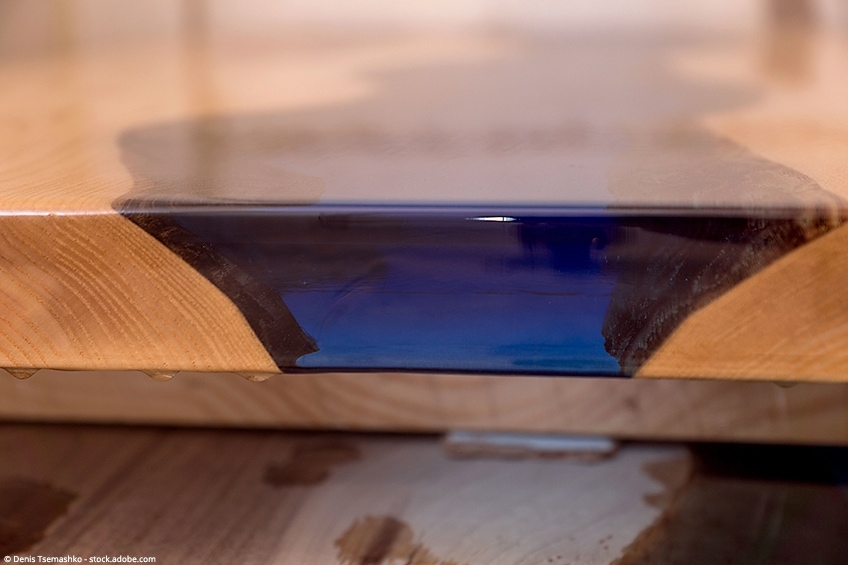
Curing Times: Patience with Casting Resin
Some casting resins require a period of up to one week for complete curing. However, this not only means a corresponding waiting time, but can have its advantages: After all, the processing time is also longer. Some epoxy resins cause quite a bit of stress during processing because they can only be applied for a few minutes or, as a rule, for a maximum of one hour. On the other hand, there are the possibilities offered by casting resins with a processing time of up to 24 hours. The advantages are obvious:
- when processing larger areas, objects can be carefully positioned and embedded for casting
- larger quantities of resin can be colored with different colors at rest and applied without time pressure
- the longer time span until hardening allows even trapped air bubbles to escape more easily
All in all, not only is a little more patience required when working with casting resin, but there are also clear advantages for certain types of projects. Ultimately, the key question is always whether a special product with its specific properties is optimally suited to the respective work project.
Which Projects can be Executed with Casting Resin?
To avoid unpleasant surprises during the work or afterward, the question of the right material should always be clarified in advance. Casting resin in its various product variants is basically suitable for the following areas of application:
- the production of river tables/casting resin tables
- the creation of resin jewelry
- the casting of molds or the casting of cast resin figures in silicone molds
- Pouring of objects of all kinds
- the filling of cracks and cavities in wooden workpieces with casting resin
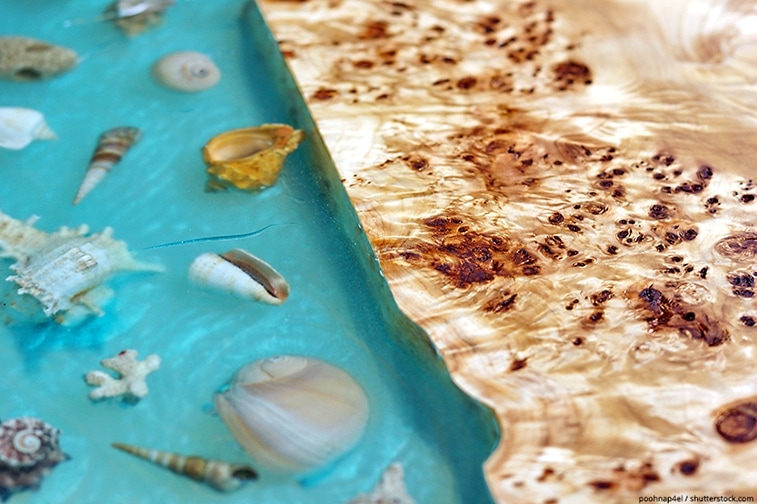
How to Use Clear Casting Resin
The Preparation of the Workplace and Material
- First of all, you should have all the working materials clearly laid out so that you always have everything you need within easy reach, even under time pressure
- With cardboard or plastic sheeting underneath you can protect your workplace from dirt and damage
- In order to fill hollow areas in work pieces made of wood or other materials, holes should be masked off in advance. This is the only way to ensure that the resin does not suddenly flow to unwanted places or leak out of the workpiece. Sometimes it can be quite surprising where the very thin casting resin can end up.
- When pouring objects and wooden work pieces, the surfaces should first be sealed with a thin layer of epoxy resin
- It is essential that the instructions of the casting resin manufacturer regarding the mixing ratio to be used and other safety factors are read and observed
- For health reasons, appropriate protective measures should always be taken. These include adequate workplace ventilation, suitable protective clothing including undamaged nitrile gloves, suitable safety goggles, and a suitable respiratory mask.
Mix the Casting Resin Carefully
- Weigh the resin and the appropriate hardener according to the recommended mixing ratio
- Carefully mix the two components together for a few minutes
- If transparent casting resin is not to be used in a colorless form, add suitable color pigments or pastes and stir thoroughly again
- Leave the stirred mixture to stand for a short time in order to allow at least some of the air bubbles to escape by themselves
- Pour the finished mixture into the opening or mold prepared for the resin
- Finally, let the air bubbles trapped in the material rise gently using a Bunsen burner or a hot air dryer
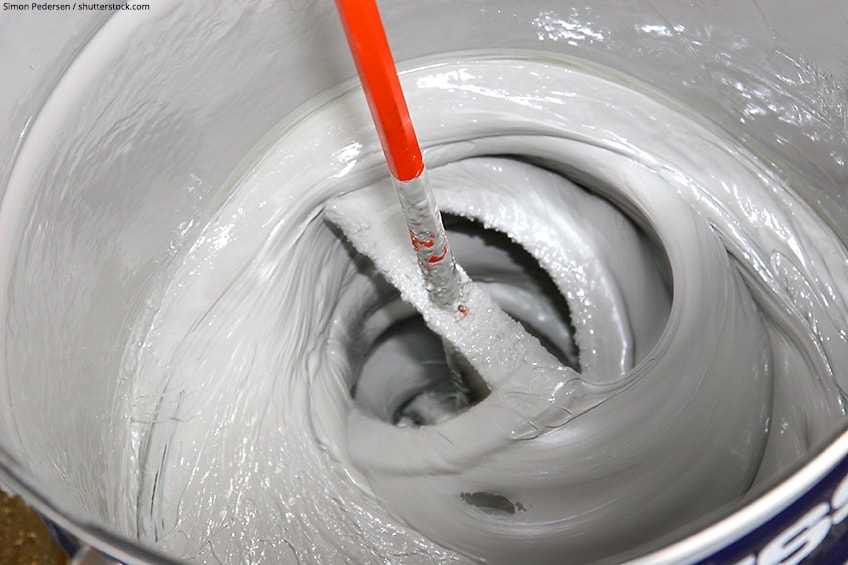
Pouring Objects into Resin
- For the casting of objects, a small amount of resin is first poured into the mold
- In the next step, the objects selected for casting are placed on the already cast resin in the mold with the help of toothpicks or a wooden spatula
- For heavy objects not to sink through the first casting layer, wait until the first layer is already sufficiently dry and almost cured
- Finally, the mold is generously filled up with the remaining resin in order to compensate for the shrinkage of the material which usually occurs to a certain extent during curing.
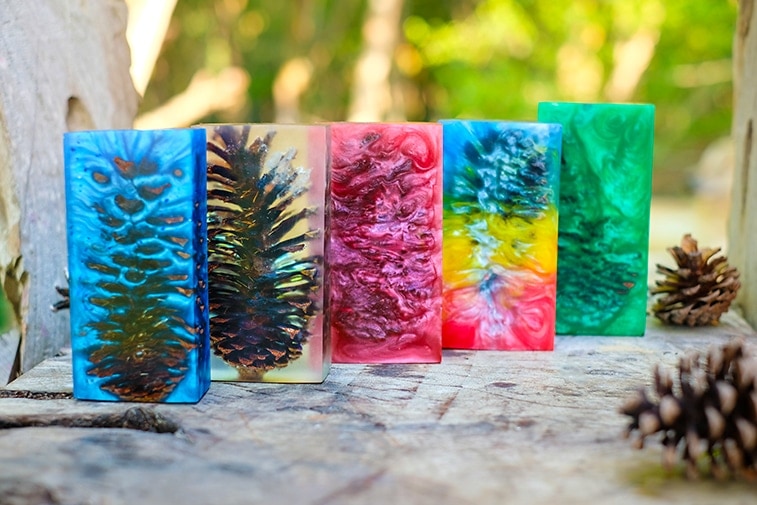
How to Make Transparent Casting Resin Crystal Clear
Unless the casting resin used is specially colored, in most projects it should cure in a crystal clear quality more often than not. This can be best ensured with the following tips:
- Use of high-quality casting resins from well-known brand manufacturers
- Only buy casting resin that has an appropriately high-quality UV filter
- Adhere as closely as possible to the mixing ratio recommended by the manufacturer
- The best possible results can often be achieved by coating with a special varnish with the appropriate UV filter.
- Polish your resin casting piece briefly to achieve a transparent surface
Note: Even if all these points are observed, we cannot guarantee that the casting resin you use in various projects will not yellow a little over time. Unfortunately, especially under the influence of UV light and wetness, a certain amount of clouding and yellowing can always occur.
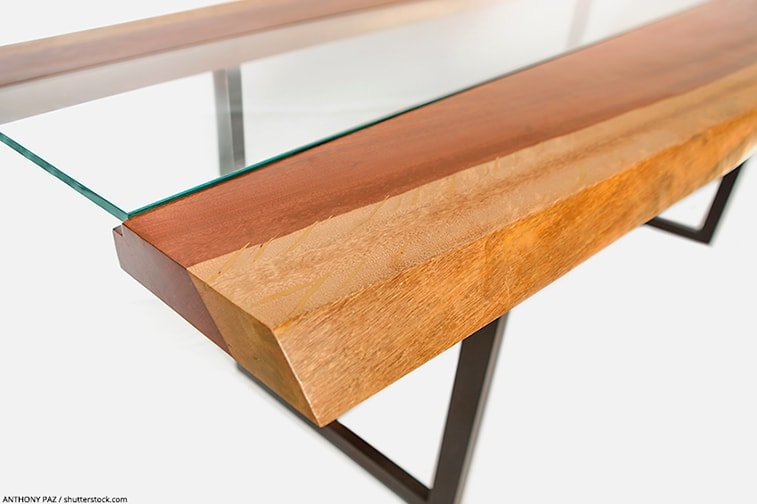
Coloring Transparent Casting Resin
Transparent casting resin is often still mixed with paint after mixing resin and hardener in order to be used in the desired color shade. However, when choosing the colors you should pay close attention to whether they are really suitable for use in combination with the casting resin.
We can recommend the following color media for use with casting resin:
Special Colors for the Coloring of Casting Resins
There are colors available in specialist shops and on the Internet that have been specifically developed for coloring synthetic resin. We have already gone into more detail elsewhere about the advantages of the most well-known product in this category: ResinTint, from the manufacturer ArtResin.
Alcohol Ink – Inks on an Alcoholic Base
Alcohol inks can be dosed relatively sparingly due to their high concentration and the high amount of color pigments they contain. A few drops are usually sufficient to color the casting resin. However, this quantity does not only apply to inks on an alcohol basis, but also to those on a water basis.
However, there are also disadvantages when using alcohol-based inks: Unfortunately, these are not particularly light-resistant. So if you want to use your resin for projects that will later be regularly exposed to UV light, you should reconsider the use of alcohol inks for coloring. However, you can achieve certain color effects with alcohol inks, as they are essential for example in the art form called Petri Art. Unfortunately, no equally effective alternative has yet been developed that is more light-resistant.
Coloring Casting Resin with Airbrush Paint
The term airbrush color includes all colors that are usually used in connection with airbrushes or are suitable for airbrushing. These colors are actually always water-based and are available as acrylic colors or water-based colors.
In contrast to other acrylic paints or water-based paints, the color pigments in airbrush paints are extremely finely structured and extremely fluid in their carrier medium. Since airbrush paints are also very easy to mix and have a high luminosity, they are generally used very often for coloring casting resins.
Unfortunately, this high quality also has its downside: Airbrush paints are comparatively expensive compared to other acrylic or water-based paints.
- Cheap but high-quality Airbrush Paint Set
- 6 of the most used colors in one Set
- Opaque, can be used with all kinds of resin
Pigment Powder as a Colorant
Pure pigment powder can also be used very well for coloring casting resins. But you should mix pigment powder with the resin casting resin before adding the hardener. Usually, a minimum dosage is sufficient when using pure pigments.
Pigments can be bought in all possible color variations from metallic, shiny colors to matt colors. We recommend you not to pay too much attention to the price when choosing your pigments: Only the high-quality products from recognized brand manufacturers can satisfy with light-fastness and correspondingly high color quality. In this way, you can ensure that your cast resin artwork will still impress with brilliant colors and a non-fading color structure even after several weeks and months.
The Hardness of the Cast Surfaces
In general, it can be stated in a simplified way that the surfaces of cured epoxy resins are usually much harder than the surfaces of fully cured casting resins. However, the lower hardness does not necessarily have to be a problem. On the contrary, depending on the project, it may even be advantageous if the surface, due to its lower hardness, allows a certain degree of adaptation to other materials processed with it, such as wood or glass.
For example, wood can expand or shrink depending on humidity and temperature. You should, therefore, consider individually for each work project whether these properties are desirable or undesirable. A coating with epoxy resin and thus the decision for a particularly abrasion-resistant and solid sealant will be the right choice, for example, for a table or other surfaces subject to intensive mechanical stress. However, this can also be achieved for wooden tables after processing with casting resin by applying a hard finish of epoxy resin or laminating resin as a protective layer.
What to do in Case of Air Bubbles in the Epoxy Resin?
Casting resins and epoxy resins are generally about equally susceptible to the problem of air bubbles trapped in the material. From a purely physical point of view, of course, these air bubbles can escape from the much thinner layers more quickly and easily when working with epoxy resin than from a thicker layer of casting resin. But working with casting resins makes up for this supposed disadvantage in another way: Since the time until the liquid material hardens is considerably longer, the air bubbles can also rise more during this time and thus eventually burst at the surface.
But there are other methods to limit the formation of air bubbles from the outset, even when casting thick layers of casting resin: If you work with porous surfaces such as wood, there is a risk that air bubbles will escape from the material and thus get into the casting resin. If these surfaces are first sealed with a thin layer of epoxy resin, the escape of air bubbles into the casting resin can be prevented.
You can proceed in a similar way if you want to embed objects in your casting resin. Especially for wood, we always recommend sealing with epoxy resin to minimize the number of air bubbles.
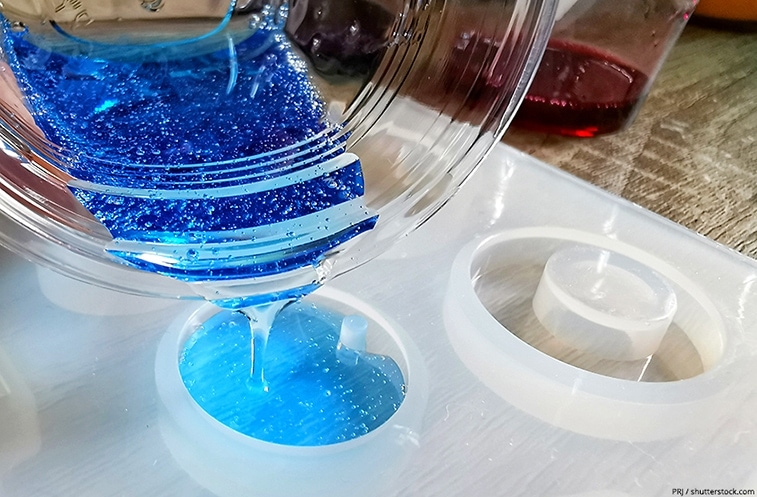
How can Epoxy Resin be Precisely Weighed and Easily Mixed?
We recommend the use of a modern digital scale for an optimal mixing ratio of casting resin and hardener. However, there are also cast resin systems where the perfect mixture is calculated by volume. These can be measured with a suitable measuring cup.
The Best Resin Casting Molds
With casting resin, you should use polished silicone molds, which works best for casting resin. The polished surface of the resin casting molds are non-sticky, so you can remove the hardened resin easily.
Safety also Comes First when Working with Resin
Although most synthetic resins are largely harmless after complete curing, their processing is certainly associated with certain health risks. You should therefore never allow liquid casting resin or its components to come into direct contact with your skin. Nitrile gloves that are free of holes and cracks are therefore indispensable. You should also protect your eyes with suitable safety glasses. Even if your workplace is well ventilated, we recommend that you wear a respiratory mask to protect against toxic vapors.
Larissa Meyer is a 32-year-old mother from Michigan and creative spirit since childhood. Her passion for painting and drawing has led her to an education as an illustrator and a career as a freelance graphic designer. She has a Bachelor of Fine Arts in Illustration and a degree in Graphic Design. Larissa is a talented artist who is able to master a wide range of styles and techniques to bring her artistic vision to life. Her greatest passion is currently fluid painting and epoxy resin art. Larissa’s love for art and her knowledge and experience in illustration make her the perfect Creative Director for our fluid-painting.com team. She is the creative head of our team and shares her passion and knowledge with our community through articles and tutorials.
As a mother of a 2-year-old daughter, Larissa also understands the importance of fostering creativity in early childhood. She uses her experience and knowledge to help other parents inspire their children and develop their artistic skills as well.
Learn more about Larissa Meyer and about us.

